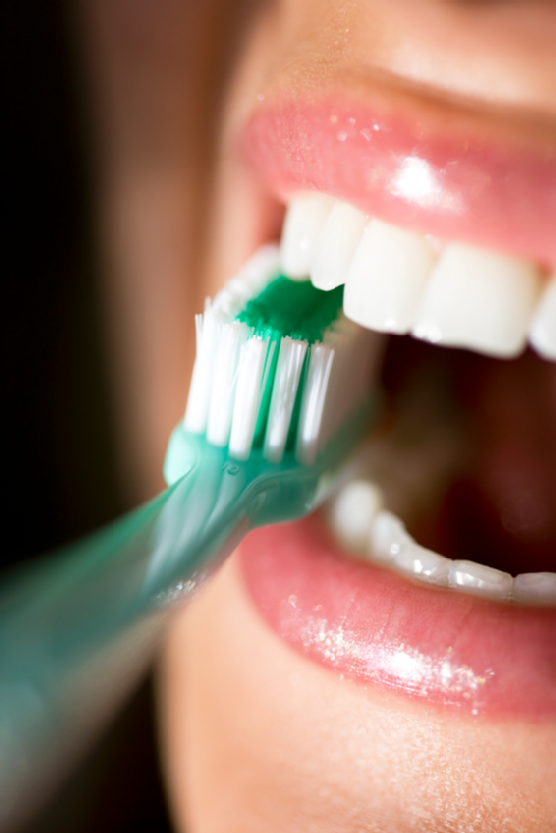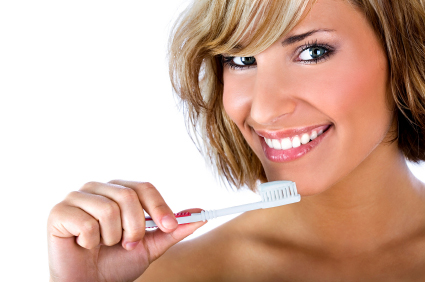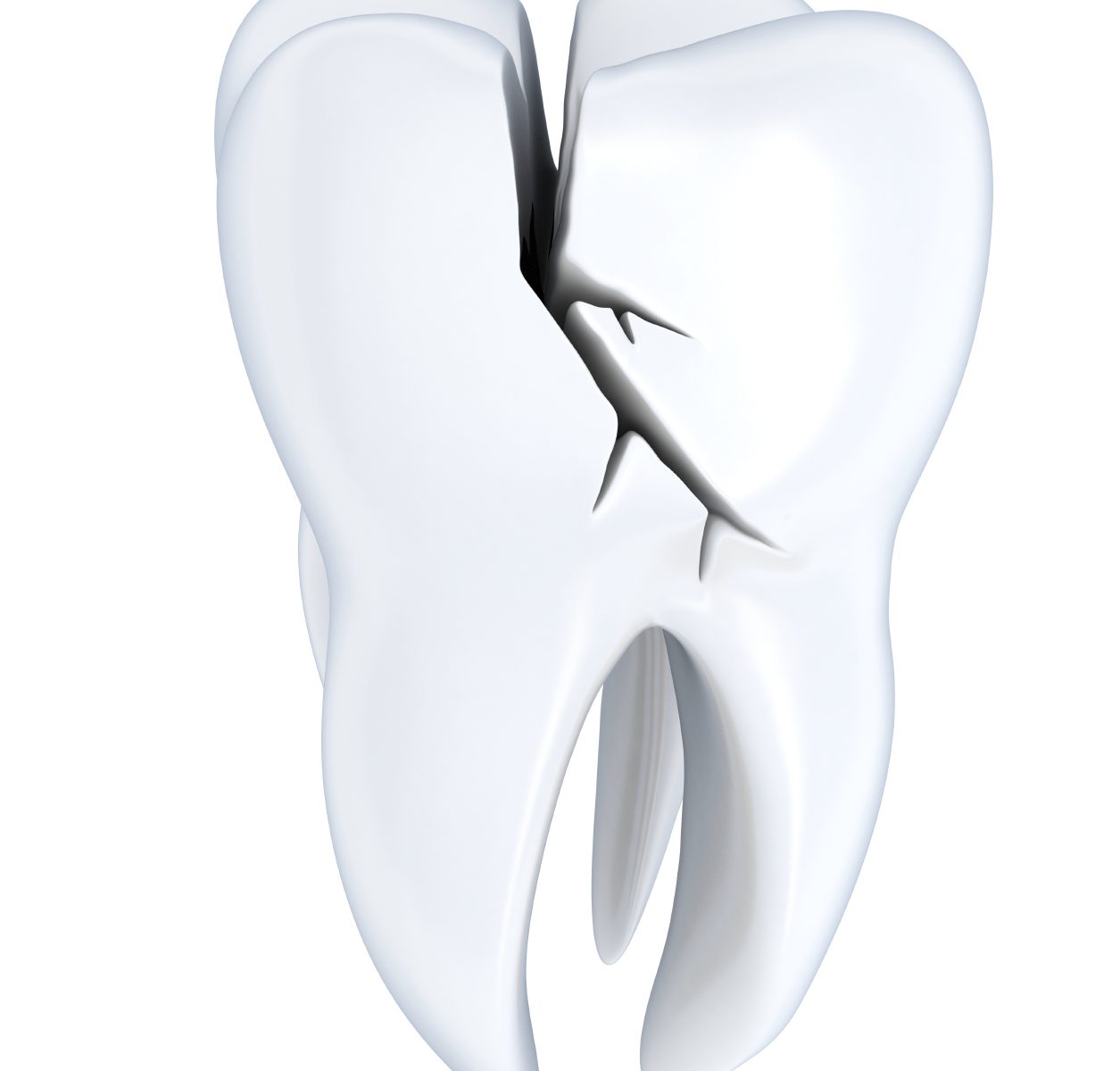The human mouth is a marvel of biological engineering, serving a multitude of essential functions that go far beyond mere communication. This intricate structure plays a vital role in our ability to eat, breathe, and express our emotions. In this blog, we will take a closer look at the anatomy of the human mouth and the various components that make it such a versatile and indispensable part of our bodies.
Continue reading “The Anatomy of the Human Mouth | Henderson Dentist”Five Myths and Misconceptions of Oral Care | Henderson Dentist
Oral care and hygiene are paramount to our ability to maintain and retain our teeth as we age. With so much information about oral care practices online, we felt it was important to demystify some of the most common dental myths and misconceptions we hear and offer advice on how to move forward.
Myth 1. Baby Teeth Don’t Need Brushing.
Good oral care practices begin when we are young and proper oral care for a child’s first set of teeth matters. Tooth decay in a baby tooth can lead to complications as an adult, so we recommend a twice-daily brushing routine as soon as the child has teeth.
Myth 2. Sugar Causes Cavities.
Sugar itself is not the cause of cavities, though the bacteria that eat the sugar can be. The starches and sugar themselves attract bacteria that thrive on the surface of your teeth and release an acidic compound that promotes tooth decay. Regular brushing and rinsing after eating particular sugary foods will go a long way toward preventing decay.
Myth 3. Hard Brushing Cleans Better.
This action is counter-productive, as excess pressure on your teeth can work to damage enamel rather than support it. Hard brushing also hurts our gums and can lead to a recessed gum lining over time. We recommend taking care to brush gently with a soft-bristle brush.
Myth 4. Chewing Gum Helps Clean Teeth.
Chewing gum is certainly not a replacement for brushing. Chewing gum can be a great way to combat sugar cravings or a candy habit, but while it makes your breath smell better, it cannot replace the benefits of brushing.
Myth 5. Enamel Loss Causes Sensitivity.
We may experience sensitivity for many reasons, and enamel loss doesn’t happen overnight. Tooth grinding, abrasive toothpaste, aggressive brushing and lack of regular proper oral hygiene all contribute to both sensitivity and a loss of enamel. Should you lose your enamel, however, you will likely experience tooth sensitivity as well.
Interested in learning more? Call to schedule an appointment today at 702-735-2755 or visit us online at www.patricksimonedds.com today.
Dr. Patrick Simone proudly serves patients from Henderson and all surrounding areas.
Understanding Oral Bacteria | Henderson Dentist
We all know that oral bacteria can contribute or be detrimental to our overall oral hygiene. Good bacteria and harmful bacteria coexist, and certain behaviors can advance one or the other. In general, a good oral care routine and healthy eating will keep the harmful bacteria at bay without any serious issues. Here are some things you should know about the bacteria that exists within your mouth.
Helpful Bacteria
lactobacilli bacteria can fight several kinds of harmful bacteria and may help restore a healthy balance in your mouth. This bacteria can be found in some types of chewing gum and people with gingivitis may be asked to use it every day by their dentist.
Streptococcus Salivarius helps suppress oral pathogens like Streptococcus Pyogenes and Streptococcus Pneumonia that cause infections and autoimmune disorders. It also provides immune support to help reduce symptoms of oral and respiratory viral infections while crowding out other potentially harmful oral pathogens.
Harmful Bacteria
Streptococcus mutans is specifically found on tooth surfaces and difficult-to-clean areas like pits and fissures on the teeth. It feeds on the sugars and starches you eat, leading to the formation of cavities. This bacteria is the main cause of tooth decay in humans because it produces enamel-eroding acids and thrives in a low pH.
Periodontitis is a serious inflammatory disease that affects the tissues and the alveolar bone that support the teeth. While this disease is caused by several types of bacteria, Porphyromonas gingivalis is strongly linked to it.
Interested in learning more? Call to schedule an appointment today at 702-735-2755 or visit us online at www.patricksimonedds.com today.
Dr. Patrick Simone proudly serves patients from Henderson and all surrounding areas.
Biting Your Nails Seriously Impacts Your Teeth | Henderson Dentist
We only get one set of adult teeth. They should be one of the most important things you work to protect through proper oral care and intended use. Biting your nails may seem harmless, but it can cause serious damage to a beautiful smile. It increases the risk you may chip a tooth, increase the amount of harmful bacteria in your mouth and begin to shift your teeth.
All too often, we use our teeth do perform tasks other than chewing. For some, the convenience of using our teeth to perform certain actions – such as biting our nails – outweighs the risk of chipping a tooth or otherwise damaging our teeth over time. Biting our nails tends to start as a childhood fascination that if left unchecked, can progress into adulthood.
Before you damage a tooth or otherwise damage your smile, here are some tips to help yourself keep from biting your nails:
- Identify your triggers
- Keep your nails trimmed
- Get regular manicures
- Apply a clear or bitter-tasting to your nails or the edge of your finger tips
- Replace the nail-biting habit with a good habit
- Try to gradually stop biting your nails, going nail by nail until the habit is kicked
Small steps may be the key to making a bigger change. The sooner you kick your nail-biting habit, the less time you spend unconsciously damaging your teeth.
Interested in learning more? Call to schedule an appointment today at 702-735-2755 or visit us online at www.patricksimonedds.com today.
Dr. Patrick Simone proudly serves patients from Henderson and all surrounding areas.
Tartar Buildup: What To Know and What To Do About It | Henderson Dentist
When plaque isn’t removed properly from your hygienic routine, that’s when the soft, removable plaque can turn into tartar which may require a more intense means of removal. That is called tarter, and it’s the result of improper care for your teeth.
If you are employing a thorough routine of proper brushing and flossing, you should be able to avoid tartar buildup. Yet, it’s still important to understand the signs and symptoms of tarter buildup, so that if you do recognize it’s happening, you can consult your dentist sooner than later.
Tarter is a buildup of minerals that if above the gum line, is fairly easy to spot. If you notice yellow or brown-colored stains on the teeth or gums, it may be tarter. The only real way to know, however, is to consult your dentist, and they can remove it for you. If it gets really bad, you may experience bad breath, darker staining, loose teeth, and red, swollen, or bleeding gums.
If you have tarter buildup, your dentist or hygienist may employ a method called scaling in which he or she uses special instruments to remove the tartar from around the gum line and bottom of the tooth pocket.
While tartar buildup can happen, there are ways your can mitigate your risk. Tarter control toothpaste and rinses can help eliminate stubborn plaque to help prevent tarter alltogether. Regular visits with your dentist and flossing also go a long way in helping ensure a thorough oral care routine and minimize the risk of tartar buildup.
Interested in learning more? Call to schedule an appointment today at 702-735-2755 or visit us online at www.patricksimonedds.com today.
Dr. Patrick Simone proudly serves patients from Henderson and all surrounding areas.
Your Tongue as an Indication of Health | Henderson Dentist
History shows us that ancient cultures have regarded the tongue as an indication of oral or overall health. While this remains a topic of debate, it’s something to consider, as most people have likely examined their tongue in the mirror a few times. Here are some things that may be interesting to know about the tongue and your health.
A note about this concept
In Ayurvedic medicine, the health of the tongue is an indicator for whole-body health. The practice of tongue scraping has been performed for centuries in cultures around the world but is considered an ancient Ayurvedic practice. Today, with modern advances in medicine, we now understand what these indications may mean.
An indication of health
Different indicators are known to share different aspects of your health. Redness on the other hand can mean a deficiency In folic acid, B12, or iron as well as potentially indicate fever or strep throat. A webbed or striped look can mean you have oral lichen planus, caused by your immune system attacking your cells. Bumps along the tongue indicate canker sores and herpes commonly known as cold sores. White patches mean there may be an overgrowth of candida, a yeast that is treatable with an anti-fungal rinse or pill. If your tongue is black and hairy-looking, it may indicate diabetes, yeast infection, poor oral hygiene or the result of cancer therapies. Red and white spots mark areas where your taste buds have naturally worn, but this is common.
If you are worried about the health indications your tongue may express, consult your dentist to better understand what may be going on, and find solutions for our oral healthcare.
To schedule an appointment, or discuss any concerns you may have, call us at 702-735-2755 or visit us online at www.patricksimonedds.com today.
Dr. Patrick Simone proudly serves patients from Henderson and all surrounding areas.
Flossing is Important for Oral Care | Henderson Dentist
Flossing is a very important step for any oral care routine, and it’s usually one of the first questions posed during a visit. Routine flossing helps to ensure that the granules of residual food left after meals are removed to prevent cavities. When traces of food remain tucked away between our teeth, it becomes a source of food for corrosive sugars to feed on; over time, this becomes the source of pockets in the teeth for bacteria to settle and the problem to compound. Here are three ways you can make a habit of flossing a routine addition to your care routine.
- Find floss you enjoy
Waxed, non-waxed, plush, disposable picks, threaders, and water flossers are all available options. If one type of floss doesn’t make you want to floss, it’s less likely you will do it. It’s important to find a way to floss that suits your tastes. The tried-and-true thin waxed threads may irritate your gums, so trying a plush thread may alleviate your disregard. If the notion of putting thread between your teeth is off-putting, a water flosser that shoots a stream of high-pressure water may do the trick.
2. Set a reminder
If it’s not currently part of your routine, or you have so much going on it’s hard to remember, setting a reminder on your phone or a notecard by your sink may help you begin to incorporate this practice until its second nature. If the technique of flossing is something you struggle with, employ this practice as a means to check in with helpful guides that walk you through the proper steps until you get the hang of it.
3. Reward yourself
Marking off days on a calendar, watching an episode of your favorite show or brewing a cup of your favorite tea are all great ways to reward yourself for remembering to floss. As you go along, allow yourself a special treat once a week, every two weeks or once a month to reinforce the good hygiene habit you are forming. It takes about 21 days to form a habit, so whatever you do to encourage yourself to keep practicing for at least that long, will go a long way towards a lifetime of proper oral care.
If you would like to learn more or schedule an appointment, call us at 702-735-2755 or visit us online at www.patricksimonedds.com today.
Dr. Patrick Simone proudly serves patients from Henderson and all surrounding areas.
Cavities and How They Happen | Henderson Dentist
Cavities are part of health and hygiene discussions from the moment we begin brushing- or throw a fit about it. Cavities are preventable and treatable; it’s important to be aware of what causes cavities and how dentists treat them.
Cavities Happen Because…
Citric acid and others weaken teeth and put enamel in danger of erosion which in turn creates crevices for bacteria to stick and become a cavity. It would be difficult to avoid citric acid, so the best thing you can do is consume water throughout the day and keep the intake of acidic foods to a minimum.
While sugar doesn’t cause cavities, like citric acid, it contributes to the likelihood you may develop one. Sugar is a harmful bacteria’s favorite food, so the longer sugar lingers on your teeth, the more likely that bacteria will begin to eat it. This weakens your enamel and creates opportunities for that harmful bacteria to hang around and cause a cavity.
Children tend to crave and eat sugary foods while doing a poor job brushing their teeth. The elderly tend to take medication that reduces the amount of saliva they produce thus reducing the neutralization properties of saliva. Drinking water throughout the day and regular dental visits can help both children and their grandparents to reduce the chances harmful bacteria may cause a cavity.
How Are Cavities Treated?
Cavities are a common occurrence and dentists have several means of treating them. Treatment options vary depending on how advanced the tooth decay has become.
Simple Decay- Fluoride treatments and fillings are viable treatment options if the cavity is in its early stages. Your dentist will apply a solution to the decaying tooth to kill harmful bacteria and place a filling where the cavity was to seal the area to prevent further decay. This is a fairly simple and painless method for cavity removal, as well as the most common treatment option.
Serious Decay- If the cavity has progressed beyond the ability for a fluoride treatment to remove the bacteria, crowns, root canals and tooth extraction are a dentist’s next line of defense. Crowns are custom coverings for decaying teeth; typically made from porcelain, they work to strengthen your effected tooth once the bacteria has been removed. If the decay reaches the inner tooth, or pulp, your dentist will remove the pulp, medicate it to clear any infection and add a filling. Tooth extraction is a last resort option when the decayed tooth is beyond restoration. Your dentist may recommend a bridge or implant for the gap.
Worried you may have a cavity? Call to schedule an appointment today at 702-735-2755 or visit us online at www.patricksimonedds.com today.
Dr. Patrick Simone proudly serves patients from Henderson and all surrounding areas.
Oral Care Myths and Misconceptions | Henderson Dentist
Oral care and hygiene are paramount to our ability to maintain and retain our teeth as we age. With so much information about oral care practices online, we felt it was important to demystify some of the most common dental myths and misconceptions we hear and offer advice on how to move forward.
Myth 1. Hard Brushing Cleans Better.
This action is counter-productive, as excess pressure on your teeth can work to damage enamel rather than support it. Hard brushing also hurts our gums and can lead to a recessed gum lining over time. We recommend taking care to brush gently with a soft-bristle brush.
Myth 2. Chewing Gum Helps Clean Teeth.
Chewing gum is certainly not a replacement to brushing. Chewing gum can be a great way to combat sugar cravings or a candy habit, but while it makes your breath smell better, it cannot replace the benefits of brushing.
Myth 3. Baby Teeth Don’t Need Brushing.
Good oral care practices begin when we are young, and proper oral care for a child’s first set of teeth matters. Tooth decay in a baby tooth can lead to complications as an adult, so we recommend a twice daily brushing routine as soon as the child has teeth.
Myth 4. Sugar Causes Cavities.
Sugar itself is not the cause of cavities, though the bacteria that eat the sugar can be. The starches and sugar itself attract bacteria that thrive on the surface of your teeth and release an acidic compound that promotes tooth decay. Regular brushing and rinsing after eating particular sugary foods will go a log way to prevent decay.
Myth 5. Enamel Loss Causes Sensitivity.
There are many reasons why we may experience sensitivity, and enamel loss doesn’t happen overnight. Tooth grinding, abrasive toothpaste, aggressive brushing and lack of regular proper oral hygiene all contribute to both sensitivity and a loss of enamel. Should you lose your enamel however, you will likely experience tooth sensitivity as well.
To schedule an appointment today or learn more about proper oral care and see the beautiful smiles Dr. Simone has created, visit us online Dental Myths and Misconceptionsathttp://www.patricksimonedds.com/
What Type of Toothbrush and Toothpaste is Right for Me? | Henderson Dentist
For most of us, “twice a day for two minutes” is a good enough rule of thumb for our oral hygiene, but what we brush with also matters. Dentists recommend soft bristle toothbrushes for people of all ages to decrease excess pressure and harsh brushing on your teeth and gums. Excess pressure while brushing can damage enamel and create microtears in your gum tissue. While it may feel like gentle brushing doesn’t accomplish the same clean as brushing with pressure, a thorough clean can still be accomplished while being kind to your gums.
Other decisions to make about your toothbrush include what materials it’s made from, bristle pattern and the addition of things like charcoal to the bristles. These factors play a lesser role in the maintenance of oral hygiene, but with options on the market, its best to be informed.
Plastic toothbrushes with rubber grips line the lisle, but did you know toothbrushes are also made with bamboo and plant-based, compostable materials? Toothbrushes made from plant materials contribute less plastic waste to our world; simply cut off the bristles and burry the handle in your yard (or as recommended by manufacturer).
All toothbrushes are designed to remove surface level food and stains, no matter the bristle pattern. Toothbrushes featuring additives such as charcoal are not inherently bad as they can complement a well-rounded hygienic routine, but unregulated use may damage your enamel more than it whitens your teeth.
Sensitivity toothpaste works by concealing dentinal tubules or desensitizing nerve endings. They also contain fluoride which works to strengthen enamel. If you experience pain while drinking hot or cold fluids, it may be a sign you need a toothpaste that works to relieve your sensitivity. It is important to speak with a dentist about these concerns as well, as it may indicate a more serious issue.
Lastly, the flavor of your toothpaste is entirely up to you and with so many options from bubble gum to mint, it may be fun to change up the flavors as you go!
To learn more, or to schedule an appointment today, visit us at http://www.patricksimonedds.com/







